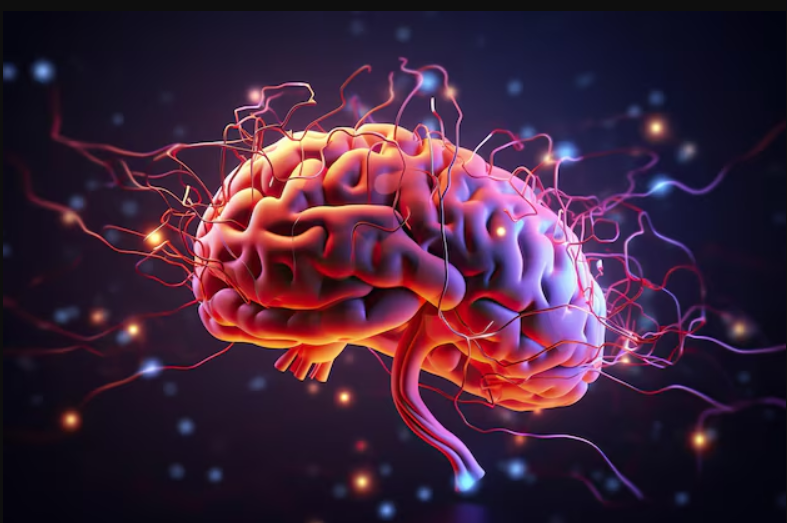Brain Tumors in Children
Types of Brain Tumors
- Primary Brain Tumors: Originate within the brain tissue itself and are the focus of pediatric brain tumor treatment. Examples include:
- Astrocytomas: Tumors arising from star-shaped glial cells called astrocytes. Low-grade astrocytomas (such as pilocytic astrocytomas) are slow-growing and often benign, whereas high-grade astrocytomas (such as glioblastomas) are malignant and more aggressive.
- Ependymomas: Develop from ependymal cells lining the ventricles of the brain and spinal cord. These can obstruct cerebrospinal fluid flow and cause hydrocephalus (fluid accumulation).
- Medulloblastomas: Highly malignant tumors that typically develop in the cerebellum, the lower back part of the brain responsible for balance and coordination. Medulloblastomas can spread through the cerebrospinal fluid (CSF) to other parts of the central nervous system.
- Craniopharyngiomas: Benign tumors that develop near the pituitary gland but can affect hormone production and vision due to their location.
- Gliomas: Tumors arising from glial cells, encompassing astrocytomas, ependymomas, and other subtypes.
- Secondary Brain Tumors: Rare in children and result from cancer spreading (metastasizing) to the brain from another part of the body.
Symptoms of Brain Tumors in Children
- Intracranial Pressure Symptoms:
- Headaches: Often worse in the morning due to changes in pressure while lying down.
- Nausea and Vomiting: Frequently occurs in the morning.
- Drowsiness and Fatigue: Excessive tiredness that may affect daily activities.
- Neurological Symptoms:
- Seizures (Fits): May develop without any prior history of epilepsy.
- Visual Disturbances: Blurred or double vision, abnormal eye movements.
- Behavioral Changes: Personality changes, irritability, loss of interest in activities.
- Motor Problems: Difficulty with balance, walking, or coordination.
- Focal Neurological Deficits: Weakness, numbness, or paralysis on one side of the body.
- Developmental or Growth Issues: Some tumors can interfere with hormone production, affecting physical development.
Diagnostic Process
- Initial Assessment by Pediatrician or GP:
- Collection of medical history, symptoms, and a physical exam to detect neurological deficits or changes.
- Neurological Examination:
- Involves checking eye movements, pupil response, reflexes, coordination, and balance.
- Imaging Tests:
- MRI (Magnetic Resonance Imaging): Provides detailed images of the brain’s structure, using magnetic fields and radio waves. Often requires sedation or anesthesia for younger children to remain still during the procedure.
- CT (Computed Tomography) Scan: Uses X-rays to create cross-sectional images. Faster than an MRI but provides less detail.
- Biopsy:
- A surgical procedure to remove a small tissue sample from the tumor for microscopic analysis. This helps determine the exact type of tumor and its grade.
- Additional Tests:
- Lumbar Puncture (Spinal Tap): In some cases, CSF is sampled to check for tumor cells or markers.
- Blood Tests: Evaluate overall health, organ function, and sometimes genetic markers.
Treatment Approaches
- Surgery:
- Goal: Remove as much of the tumor as possible while preserving normal brain function.
- Complete Resection: When feasible, the entire tumor is removed.
- Partial Resection: Sometimes, only part of the tumor can be safely removed.
- Shunt Placement or Ventriculostomy: Performed to relieve pressure if cerebrospinal fluid is obstructed.
- Radiotherapy:
- External Beam Radiotherapy: Focuses high-energy radiation precisely at the tumor.
- Proton Beam Therapy: A more targeted form of radiotherapy, minimizing damage to surrounding healthy tissue. Often used for tumors in sensitive areas of the brain.
- Chemotherapy:
- Delivered orally, intravenously, or intrathecally (directly into the CSF).
- Often used in combination with surgery and/or radiotherapy, especially for malignant tumors.
- Can involve different drug regimens tailored to the tumor type and child’s response.
- Targeted Therapies (Emerging Treatments):
- May involve drugs designed to specifically target cancer cell receptors or pathways.
- Clinical Trials:
- May offer new treatment opportunities and are strictly regulated to ensure safety and efficacy. Participation is voluntary and thoroughly discussed with families.
Side Effects of Treatment
- Short-Term Effects:
- Hair Loss: Temporary for chemotherapy; may be permanent after radiotherapy.
- Fatigue: Common during and after treatment.
- Nausea and Vomiting: Managed with anti-emetic medications.
- Infection Risk: Lowered immunity due to chemotherapy.
- Long-Term Effects (Possible) Include:
- Cognitive Impairment: Memory, attention, and learning difficulties.
- Hormonal Changes: If the hypothalamus or pituitary gland is affected.
- Physical Growth Delays: Stunted growth due to radiation near growth plates.
- Fertility Issues: Resulting from certain chemotherapy regimens.
Supportive Care and Follow-Up
- Rehabilitation: Physical, occupational, and speech therapy to aid recovery and restore function.
- Follow-Up Visits: Routine check-ups to monitor tumor recurrence, manage side effects, and assess overall health and development.
- Psycho-Social Support: Counseling, peer support groups, and access to social workers help families cope with emotional, financial, and logistical challenges.
Emotional Support for Families
- Parental Guidance and Support: Access to specialists who can offer comprehensive guidance on treatment options, prognosis, and support systems.
- Psychological Counseling: For children and families to address fears, stress, and the impact on daily life.
- Peer Support and Community Resources: Connecting with other families experiencing similar challenges can provide comfort and practical advice.
Research and Treatment Guidelines
- Children’s Cancer and Leukaemia Group (CCLG): Provides evidence-based guidelines and research updates to ensure optimal care.
Summary
Caring for a child with a brain tumor involves a multidisciplinary approach, customized to their unique needs. Open communication with healthcare providers, access to support networks, and staying informed about advances in treatment are critical for managing this challenging journey. Families should never hesitate to reach out for emotional, medical, and community support to navigate this difficult time.







